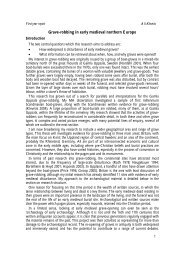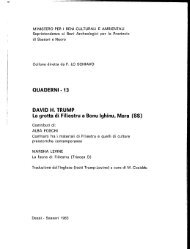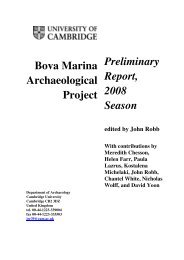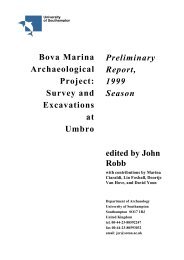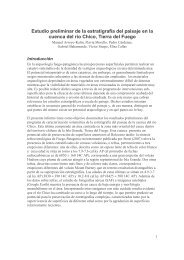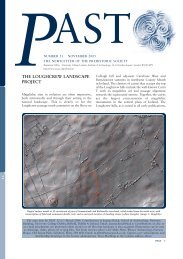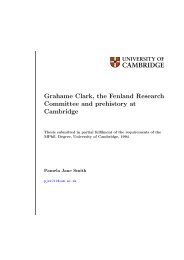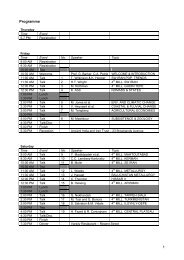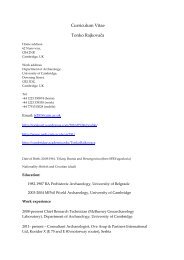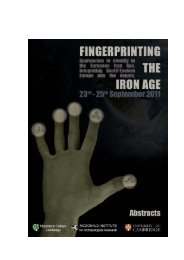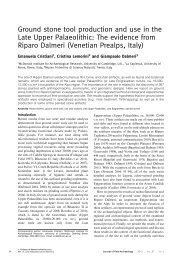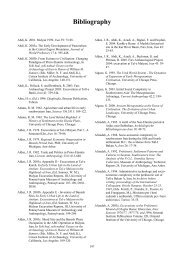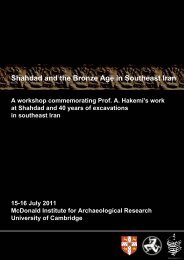The Landscape Context of Valcamonica/Valtellina Alpine Rock-Art
The Landscape Context of Valcamonica/Valtellina Alpine Rock-Art
The Landscape Context of Valcamonica/Valtellina Alpine Rock-Art
You also want an ePaper? Increase the reach of your titles
YUMPU automatically turns print PDFs into web optimized ePapers that Google loves.
First Year Report – Craig Alexander<br />
Considering first the synchronic hypotheses we can see that, if the petroglyphs form part<br />
<strong>of</strong> the taskscape (as, for example, Barfield & Chippindale’s work at Mont Bégo argues<br />
that they do) then we might expect some regularities in their deposition within a given<br />
period. Whilst we cannot identify the “hand” <strong>of</strong> an individual carver and so tell directly<br />
whether multiple people carved at a given site we can look for concentrations <strong>of</strong><br />
petroglyphs that can be dated to a given period. Are they at similar altitudes? Are they<br />
near known settlements? Are they on particular soil-types? Does their distribution<br />
coincide with likely activity areas? Do they coincide with expected paths between<br />
settlements (or, more broadly, the valley floor) and higher land? Are the sites<br />
intervisible? Are they interaudible?<br />
Considering, as a specific example, the “maps” – are Arcà and Fossati correct in viewing<br />
the “maps” as reflecting land tenure? If they do, and if the “map” panels are<br />
contemporary, what do they imply about farm-size? Are “map” petroglyph sites<br />
intervisible? Even though Arcà notes that “maps” are found on flat rocks it is still<br />
possible that their locations could have been known to all or some members <strong>of</strong> society –<br />
and perhaps even marked in ways no longer extant? Are the sites inter-audible? If one<br />
accepts the land tenure hypothesis one could imagine a ritual that reinforced boundaries<br />
taking place at these sites, something like the English traditions <strong>of</strong> marking parish<br />
boundaries. How long would it take to walk between the “maps”? How would varying<br />
weather conditions – fog, snow, rain – impact the geospatial relationships? Do the sites<br />
lie along likely routes <strong>of</strong> travel? Do they lie above the likely level <strong>of</strong> fog, thereby<br />
informing a traveller <strong>of</strong> changes <strong>of</strong> land tenure even when the valley is obscured?<br />
20



